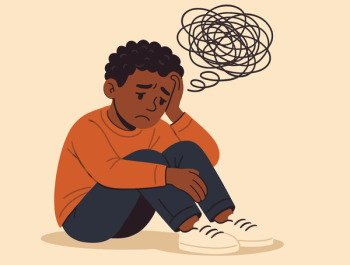
- Psychiatric Times Vol 26 No 10
- Volume 26
- Issue 10
Eating Disorders in Children and Adolescents
Eating disorders are serious and potentially life-threatening, associated with severe food restriction, overexercise, malnutrition, and distorted thinking about body shape and weight or binge eating and purging behaviors.
Eating problems are common in children and adolescents, and eating disorders typically have their onset during these developmental periods.1 Anorexia nervosa is a serious and potentially life-threatening disorder associated with severe food restriction, overexercise, malnutrition, and distorted thinking about body shape and weight. The typical age of onset is early adolescence (ages 12 to 15 years). Bulimia nervosa is characterized by periods of restriction followed by binge eating and purging behaviors (eg, vomiting, laxative use, overexercise) and often begins during middle adolescence (ages 15 to 17 years). A variety of social, developmental, genetic, and familial factors have been implicated in the etiology of these disorders, but their cause is unknown.
In younger children, a range of eating disorders has been identified that includes atypical syndromes, such as selective eating and food avoidance emotional disorder (FAED).2 These atypical disorders are diagnosed as eating disorders not otherwise specified (EDNOS) in the current DSM. These disorders typically occur in school-aged children. Children with selective eating are highly sensitive to taste, texture, and amounts of food and have an extraordinarily narrow range of acceptable foods they will eat.3 These syndromes often lead to social, behavioral, and nutritional problems.
Food neophobia may be primary (eg, never learned to eat a range of food), or it may occur in response to an adverse event (eg, choking, vomiting, diarrhea). Selective eating is associated with general anxiety and with autism spectrum disorders. Children with FAED are underweight, do not report shape and weight concerns, and often have somatic complaints (eg, stomachaches). In contrast to patients with anorexia nervosa, those with FAED usually recognize that they are too thin and want to gain weight.4
Diagnostic considerations
Identification and diagnosis of eating disorders in children and adolescents is a major problem (
In children with bulimia nervosa, the availability and opportunity to binge eat and purge is constrained by family, school, and other environmental processes that may artificially limit these activities. For these reasons, the behavioral thresholds set for these disorders are difficult to apply to this age-group.6 Consequently, the majority (approximately 60%) of children and adolescents are given a diagnosis of EDNOS.7 This heterogeneous categorization leads to confusion about the diagnosis and problems in specifying treatment, and it sometimes prohibits insurance coverage.
Treatment options
Research studies on treatment of eating disorders have generally lagged behind those of disorders of similar severity and incidence. In the adult literature, there are 9 published randomized controlled studies of psychosocial treatments for anorexia nervosa with fewer than 900 participants.8 Attrition rates averaged 50% in these studies, and no psychosocial treatment was found to be effective. Psychopharmacological studies of anorexia nervosa are also few and consist of small pilot comparisons with no evidence that medications are useful for the disorder.9
There are 6 randomized clinical trials for anorexia nervosa in children and adolescents, with fewer than 400 participants studied.8 However, family therapy was examined in 5 of these trials, and data suggest that family therapy is useful for this age-group. On average, between 60% and 80% of adolescents who are treated with family therapy no longer meet diagnostic criteria for anorexia nervosa, while between 40% and 60% reach normal weight for their age and have no evidence of eating-related psychopathology.10
No randomized clinical trials of medications for adolescents with anorexia nervosa have been published. A number of small studies of antidepressants and newer atypical antipsychotics suggest that these medications may be useful for secondary anxiety and distress, as well as for promoting short-term weight gain. Long-term benefits are unknown, however.11
For adults with bulimia nervosa, cognitive-behavioral therapy (CBT) has been shown to be more effective than placebo, medications, and several other forms of psychotherapy.12 Rates of recovery (ie, no binge eating or purging for 28 days) are about 35% with CBT, although there are much greater declines in rates (approximately 50% to 80%) of binge eating and purging even among those who do not recover. However, there are only 2 published randomized clinical trials in adolescents with bulimia nervosa.13,14
The first of those 2 studies compared a self-help version of CBT with family therapy in 80 adolescents with bulimia nervosa or partial bulimia nervosa.14 There were no differences in outcome between the 2 groups: 40% of those in both groups recovered at follow-up, but guided self-help was more cost-effective than family therapy in that study.
The second study compared family therapy with individual therapy in 80 adolescents with bulimia nervosa or partial bulimia nervosa.13 Family therapy was found to be superior to individual therapy at the end of treatment and follow-up. Rates of recovery (as defined above) at follow-up were 30% for those in family therapy and 10% for those who received individual therapy.
CBT has been adjusted for adolescents with bulimia nervosa with the addition of a focus on adolescent developmental issues, parental involvement, using age-appropriate examples, and improving the therapeutic alliance.15 Although no randomized clinical trials using these additional foci have been conducted, case series data suggest that CBT adjusted for adolescents who have bulimia nervosa was effective and led to recovery rates of approximately 50% in a clinical sample.
A number of medication treatment studies for adults with bulimia nervosa suggest that some antidepressant medications are useful for managing bulimia nervosa.16 However, when compared with CBT, medications are less effective but are more cost-effective.17 The single study of antidepressant treatment in adolescents with bulimia nervosa was a pilot study of 10 participants that found that the medication was well tolerated and led to clinical improvements in binge eating and purging.18
There are few systematic studies that compare the relative merits of different types of treatment settings for children and adolescents with eating disorders.20 Two randomized clinical trials in adolescents compare inpatient treatment with outpatient treatment.21,22 The first study compared an inpatient stay of several months in a specialty service with outpatient family and individual therapy.21 At the end of treatment and follow-up, there were no differences in outcome. A more recent study compared specialized inpatient treatment for adolescents with anorexia nervosa with specialized outpatient CBT for adolescents with anorexia nervosa and usual outpatient care.22 Again, no differences were found at 1-year follow-up; however, specialized CBT was the most cost-effective.23
There are no systematic studies that compare day programs or other intensive outpatient treatments with outpatient care, although there is evidence that such programs are becoming more common.24 However, one study compared a high dose with a low dose of outpatient family treatment for adolescents with anorexia nervosa and found that at the end of treatment and at 4-year follow-up, those adolescents who received the lower dose did as well as those who received twice as much treatment for twice as long.25,26 Taken together, these findings suggest that treatment for adolescents with anorexia nervosa does not require intensive intervention for psychiatric improvement.
Although the psychiatric treatment of adolescents with anorexia nervosa may generally be conducted on an outpatient basis, management of the medical consequences of severe malnutrition as a result of anorexia nervosa often requires medical hospitalization.27 A number of academic and medical associations have published guidelines for the medical management of these disorders in children and adolescents, and they identify acute medical complications associated with significant weight loss, including bradycardia, hypotension, and refeeding syndrome.28
Current studies of treatment
There are a number of treatment studies of child and adolescent eating disorders that are under way. It is hoped that these studies will provide important guidance on how to improve outcomes in this population.
At the University of Chicago and Stanford University, a study of 120 adolescents with anorexia nervosa that compares a developmentally focused individual treatment (adolescent-focused therapy [AFT]) with family therapy is nearing completion. This study is a large-scale comparison of 2 major and divergent approaches to managing anorexia nervosa. AFT concentrates on individuation, autonomy, and self-mastery to overcome the preoccupations and inappropriate avoidance that characterize the symptoms of anorexia nervosa.29 Family therapy, in contrast, employs parents to directly manage the adolescent’s weight restoration and only secondarily examines adolescent developmental issues in the family context.30 The results of this study should be available soon.
Another large study of adolescent anorexia nervosa is being conducted at 7 sites in the US and Canada. The study compares family therapy (as described above) with a systemic family approach aimed at family dynamics rather than empowering parents to effect weight change in their anorexic child.31 Results will shed light on the specific role of family involvement in the treatment of adolescents with anorexia nervosa.
A study that compares family therapy, individual supportive therapy, and CBT for adolescents with bulimia nervosa is just getting under way at the University of Chicago and Stanford University. When completed, it will be the largest study of adolescent bulimia nervosa undertaken. It will provide information on whether individual supportive therapy, CBT, or family therapy is the most effective approach for the disorder and will help identify patients who might benefit differentially from one treatment.
Conclusion
While clinicians await the results of these trials, the current evidence suggests that for adolescents with eating disorders, the best available treatment is family therapy aimed at helping parents manage their child’s eating disorder symptoms.32 While the evidence for the superiority of this form of family therapy over other treatments is still limited, the data suggest that it is effective in many cases. Family therapy also appears to be useful clinically in nonresearch populations, and manualized versions of the approach are available.30,33,34 At the same time, there is undoubtedly an important role for other therapies, including individual therapy for adolescents with anorexia nervosa and bulimia nervosa, especially in situations where family therapy is not an option.29
Medications for eating disorders in children and adolescents should be reserved for those with comorbid conditions (eg, anxiety, depression) or for those who are not responsive to psychosocial treatments. The use of medication for the treatment of adolescents with anorexia nervosa-even for comorbid conditions-might best be deferred until weight is normalized to help ensure that anxiety, obsessive-compulsive behaviors and thoughts, and depressed affect are not primarily nutritionally or behaviorally based.
Among the many challenges clinicians face is developing specific expertise in treating child and adolescent eating disorders. Most eating disorder specialists focus on treating adults, and few have sufficient training or appreciation of developmental differences in younger patients who have an eating disorder. Furthermore, many nonspecialist clinicians have little training in the treatment of eating disorders, particularly in family therapy. Although there are regional centers of excellence in the treatment of child and adolescent eating disorders, these are few in number and are located mostly in urban centers. Reliance on hospital and residential treatment is, in part, a result of these limitations of trained professionals. Efforts to address these disparities by integrating eating disorder treatment training in clinical training programs, use of distance learning, and distance therapy are needed.
References:
1. Hoek HW, Hoeken D. Review of prevalence and incidence of eating disorders. Int J Eat Disord. 2003; 34:383-396.
2. Bravender T, Bryant-Waugh R, Herzog D, et al; Workgroup for the Classification of Eating Disorders in Children and Adolescents. Int J Eat Disord. 2007; 40:S117-S122.
3. Nicholls D, Randall CD, Lask B. Selective eating: symptom disorder or normal variant? Clin Child Psychol Psychiatry. 2001;6:257-270.
4. Bryant-Waugh R, Lask B. Overview of eating disorders. In: Lask B, Bryant-Waugh R, eds. Eating Disorders in Childhood and Adolescence. 3rd ed. Hove, UK: Routledge; 2007:35-50.
5. Centers for Disease Control and Prevention. CDC Growth Charts for the United States: Development and Methods. Atlanta: Centers for Disease Control and Prevention, US Dept of Health and Human Services; 2002.
6. Marcus MD, Kalarchian MA. Binge eating in children and adolescents. Int J Eat Disord. 2003;(34 suppl):S47-S57.
7. Turner H, Bryant-Waugh R. Eating disorder not otherwise specified (EDNOS): profiles of clients presenting at a community eating disorder service. Eur Eat Disord Rev. 2004;12:18-26.
8. Bulik CM, Berkman ND, Brownley, KA, et al. Anorexia nervosa treatment: a systematic review of randomized controlled trials. Int J Eat Disord. 2007;40: 310-320.
9. Walsh BT, Kaplan AS, Attia E, et al. Fluoxetine after weight restoration in anorexia nervosa: a randomized controlled trial. JAMA. 2006;295:2605-2612.
10. Couturier J, Lock J. What is remission in adolescent anorexia nervosa? A review of various conceptualizations and a quantitative analysis. Int J Eat Disord. 2006;39:175-183.
11. Couturier J, Lock J. A review of medication use for children and adolescents with eating disorders. J Can Acad Child Adolesc Psychiatry. 2007;16:173-176.
12. Agras WS, Walsh T, Fairburn CG, et al. A multicenter comparison of cognitive-behavioral therapy and interpersonal psychotherapy for bulimia nervosa. Arch Gen Psychiatry. 2000;57:459-466.
13. le Grange D, Crosby R, Rathouz PJ, Leventhal BL. A randomized controlled comparison of family-based treatment and supportive psychotherapy for adolescent bulimia nervosa. Arch Gen Psychiatry. 2007;64: 1049-1056.
14. Schmidt U, Lee S, Beecham J, et al. A randomized controlled trial of family therapy and cognitive-behavior therapy–guided self-care for adolescents with bulimia nervosa and related conditions. Am J Psychiatry. 2007;164:591-598.
15. Lock J. Adjusting cognitive-behavioral therapy for adolescent bulimia nervosa: results of a case series. Am J Psychother. 2005;59:267-281.
16. Walsh BT, Wilson GT, Loeb KL, et al. Medication and psychotherapy in the treatment of bulimia nervosa. Am J Psychiatry. 1997;154:523-531.
17. Koran LM, Agras WS, Rossiter EM, et al. Comparing the cost-effectiveness of psychiatric treatments: bulimia nervosa. Psychiatry Res. 1995;58:13-21.
18. Kotler LA, Devlin MJ, Davies M, Walsh BT. An open trial of fluoxetine for adolescents with bulimia nervosa. J Child Adolesc Psychopharmacol. 2003;13: 329-335.
19. Lock J, Giammona A. Severe somatoform disorder in adolescence: a case series using a rehabilitation model for intervention. Clin Child Psychol Psychiatry. 1999;4:341-351.
20. Meads C, Gold L, Burls A. How effective is outpatient care compared to inpatient care for the treatment of anorexia nervosa? A systematic review. Eur Eat Disord Rev. 2001;9:229-241.
21. Crisp AH, Norton K, Gowers S, et al. A controlled study of the effect of therapies aimed at adolescent and family psychopathology in anorexia nervosa. Br J Psychiatry. 1991;159:325-333.
22. Gowers S, Clark A, Roberts C, et al. Clinical effectiveness of treatments for anorexia nervosa in adolescents. Br J Psychiatry. 2007;191:427-435.
23. Byford S, Barrett B, Roberts C, et al. Economic evaluation of a randomised controlled trial for anorexia nervosa in adolescents. Br J Psychiatry. 2007;191:436-440.
24. Frisch MJ, Herzog DB, Franko DL. Residential treatment for eating disorders. Int J Eat Disord. 2006;39:434-442.
25. Lock J, Agras WS, Bryson S, Kraemer HC. A comparison of short- and long-term family therapy for adolescent anorexia nervosa. J Am Acad Child Adolesc Psychiatry. 2005;44:632-639.
26. Lock J, Couturier J, Agras WS. Comparison of long-term outcomes in adolescents with anorexia nervosa treated with family therapy. J Am Acad Child Adolesc Psychiatry. 2006;45:666-672.
27. Golden NH, Katzman DK, Kreipe RE, et al. Eating disorders in adolescents: position paper of the Society for Adolescent Medicine. J Adolesc Health. 2003;33:496-503.
28. American Academy of Pediatrics; Committee on Adolescence. Identifying and treating eating disorders. Pediatrics. 2003;111:204-211.
29. Fitzpatrick K, Moye A, Hostee R, et al. Adolescent-focused therapy for adolescent anorexia nervosa. J Contemp Psychother. In press.
30. Lock J, le Grange D, Agras WS, Dare C. Treatment Manual for Anorexia Nervosa: A Family-Based Approach. New York: Guilford Publications, Inc; 2001.
31. Pote H, Stratton P, Cottrell D, et al. Systemic family therapy can be manualized: research process and findings. Journal of Family Therapy. 2003;25:236-262.
32. National Institute for Health and Clinical Excel-lence. Eating disorders: core interventions in the treatment and management of anorexia nervosa, bulimia nervosa, and binge eating disorder. London: NICE; 2004.
33. Loeb KL, Walsh BT, Lock J, et al. Open trial of family-based treatment for full and partial anorexia nervosa in adolescence: evidence of successful dissemination. J Am Acad Child Adolesc Psychiatry. 2007;46:792-800.
34. le Grange D, Lock J. Treating Bulimia in Adolescents. New York: Guilford Press; 2007.
Articles in this issue
about 16 years ago
Continuation Treatment and Relapse Prevention in Pediatric Depressionabout 16 years ago
Antidepressant Use in Children With Cancerabout 16 years ago
The Crisis in College and University Mental Healthabout 16 years ago
FDA Eases Rules on Access to Investigational Psychotropic Drugsabout 16 years ago
Meditation in the Dentist’s Chairabout 16 years ago
Brünoabout 16 years ago
Anxiety Disorders in Children and Adolescentsabout 16 years ago
Conflicts of Interest: Policies of Psychiatric TimesNewsletter
Receive trusted psychiatric news, expert analysis, and clinical insights — subscribe today to support your practice and your patients.













